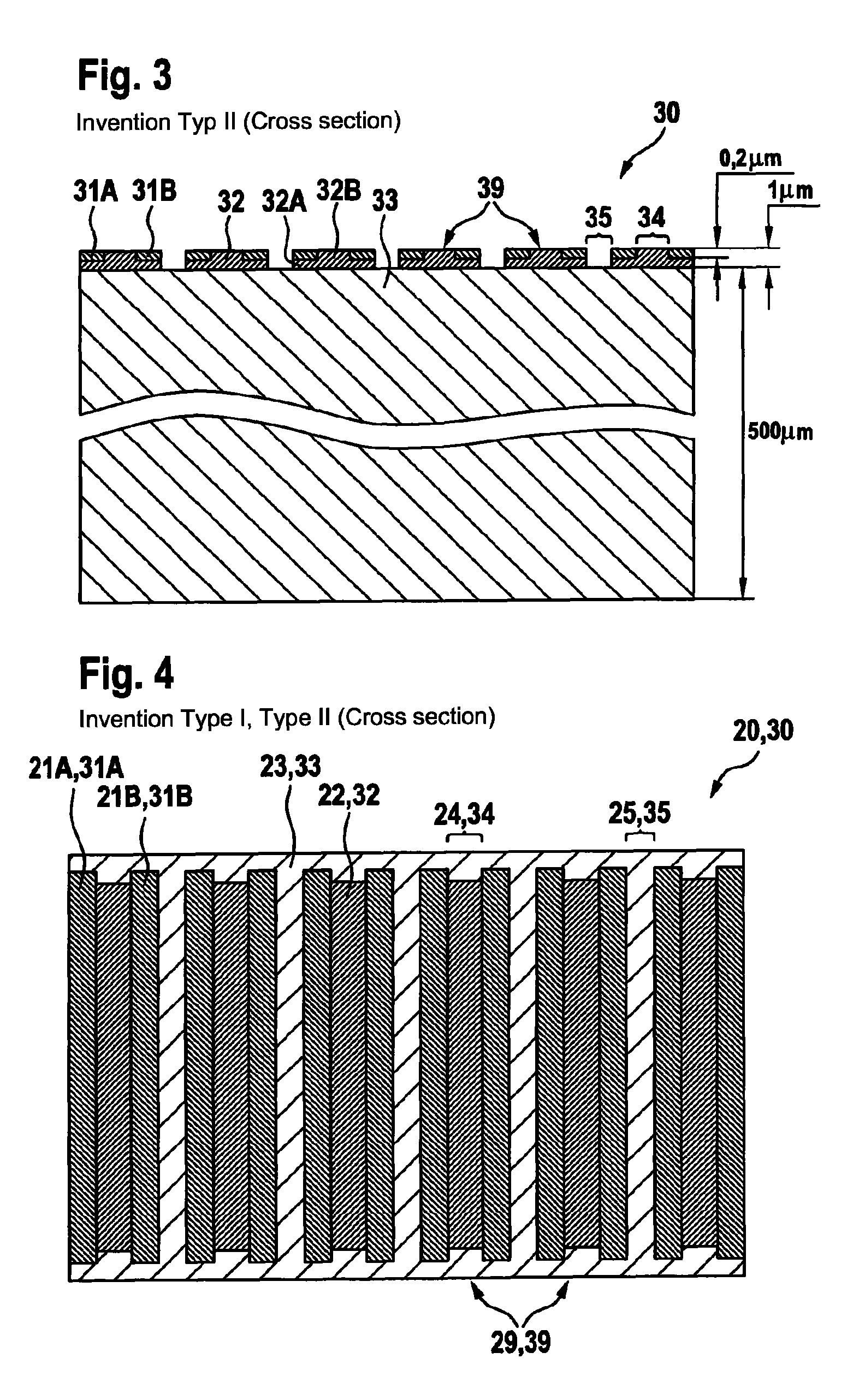THz antenna array, system and method for producing a THz antenna array
a technology thz antenna, applied in the field of thz antenna array, can solve the problems of affecting the performance of the antenna arrangement, comparatively inflexible methods, and high cost and error risk, and achieve the effect of increasing efficiency
- Summary
- Abstract
- Description
- Claims
- Application Information
AI Technical Summary
Benefits of technology
Problems solved by technology
Method used
Image
Examples
Embodiment Construction
)
[0051]FIG. 1 shows a schematic cross-sectional illustration of a known THz emitter according to the article by Dreyhaupt et al. identified at the outset. Two intermeshing finger electrodes 11 are processed by optical lithography on the surface of a semiconductive GaAs wafer 12. The spacings of the fingers of the finger electrode 11 amount to 5 μm. The metallisation of a finger electrode 11 consists of 5 nm of chromium and 200 nm of gold. Another opaque metallised layer in the form of an optically [non-?]transparent metal layer 14 composed of chromium-gold covers each second finger electrode spacing. This second metal layer 14 is insulated from the first metal layer of the finger electrode 11 by an insulating layer 13 in the form of a polyimide layer approximately 2 μm thick or a silicon oxide layer 560 nm thick. The substrate in the form of the GaAs wafer 12 has a thickness of approximately 500 μm. When the finger electrodes are biased the electric field direction between successiv...
PUM
| Property | Measurement | Unit |
|---|---|---|
| wavelength range | aaaaa | aaaaa |
| wavelength | aaaaa | aaaaa |
| wavelength | aaaaa | aaaaa |
Abstract
Description
Claims
Application Information
 Login to View More
Login to View More - R&D
- Intellectual Property
- Life Sciences
- Materials
- Tech Scout
- Unparalleled Data Quality
- Higher Quality Content
- 60% Fewer Hallucinations
Browse by: Latest US Patents, China's latest patents, Technical Efficacy Thesaurus, Application Domain, Technology Topic, Popular Technical Reports.
© 2025 PatSnap. All rights reserved.Legal|Privacy policy|Modern Slavery Act Transparency Statement|Sitemap|About US| Contact US: help@patsnap.com



